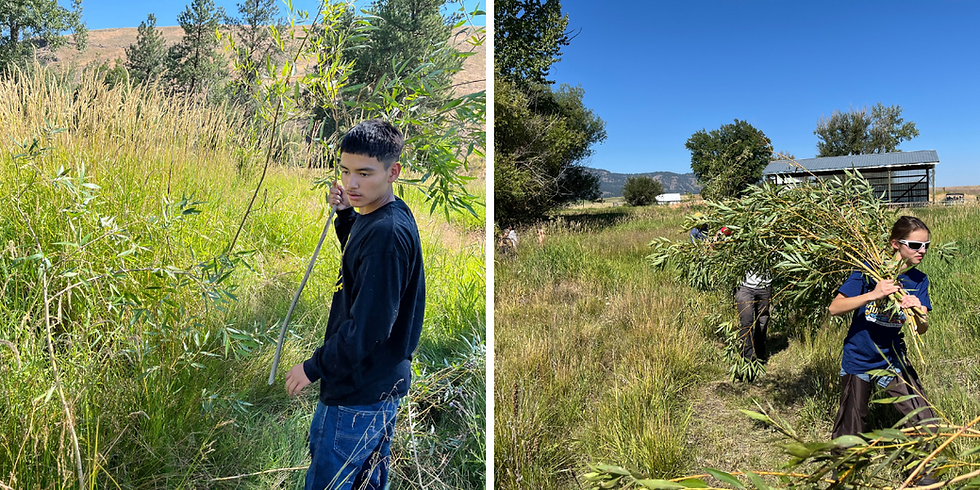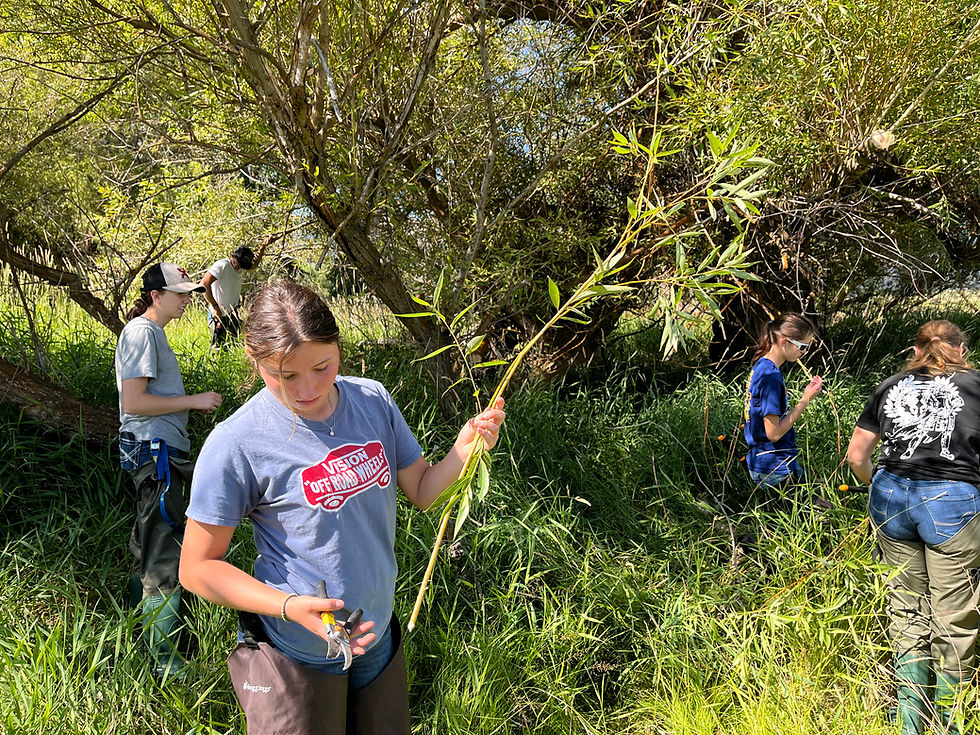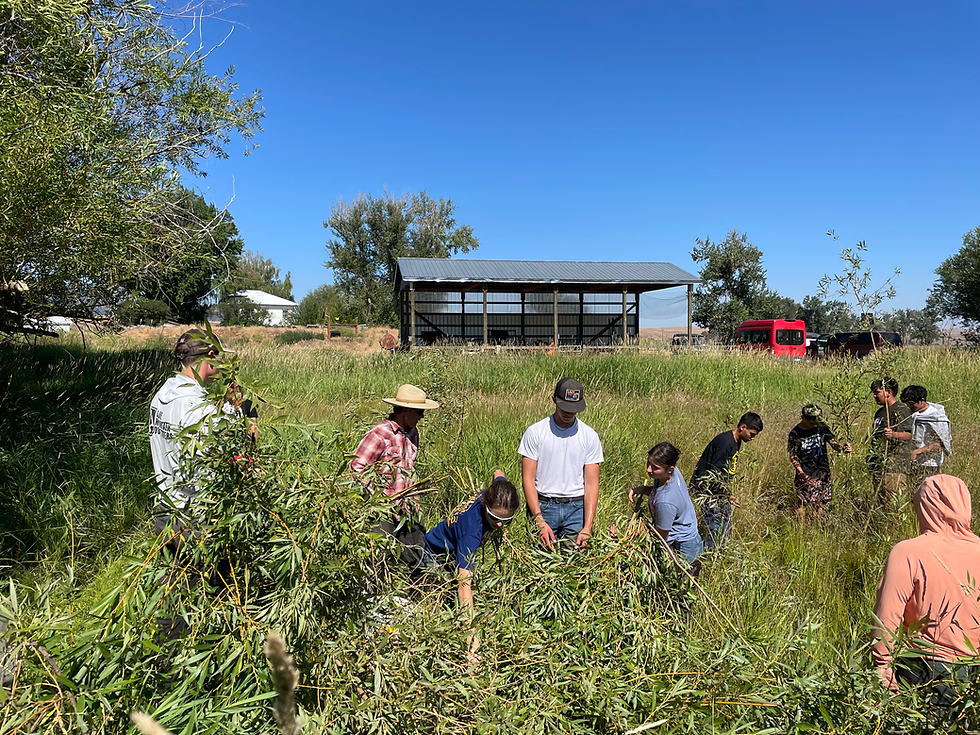Planting trees and learning to build like a beaver - working with high school interns from around the region
- Ian Wilson

- Aug 26
- 3 min read

I am always honored to accept offers to work with the next generation of students, showcasing ways we can steward the place where we live together and learn skills that can be applied to jobs in the natural world. That is why I was overwhelmed with excitement to learn that I would be working with high school interns from across our region and representing different backgrounds.
I feel an obligation to give back not only to the natural world, which has provided an endless exploration of curiosity, but more importantly to the next generation of stewards that will follow in our footsteps. It will be through their commitment and love of place that will help sustain the cycle that carries us forward.
Each year, I commit to working with high school interns with the Wallowa Resources HAWK program on different aspects of riparian restoration. More recently, these outings have also included high school student interns from La Grande who work with the Grande Ronde Model Watershed. This year, we had the great fortune of expanding our list of volunteers, working with Sapooq'is Wiit'as (Ciarra Greene), a Nez Perce Tribal member who supports working with Nez Perce youth in their traditional homelands.

We started the day talking about the value of river restoration and how it supports a diverse set of ecological functions and important fish and wildlife habitats that support community health, extending beyond the boundaries of the project areas. This includes migratory song birds, anadromous fish, and water retention. This part of the day is usually met with glazed over eyes from the younger audience, although there is still important information to distill and share, even if it lands more evenly on adults in attendance.
Once the talking was over, it was time to get to work. We each grabbed cuttings from Salix exigua (Coyote Willow). You have probably seen these alongside streams if you noticed many small stems with long lanceolate (skinny) shaped leaves. Several of the hardwoods that are native to our floodplains can be cut and replanted by sticking the cuttings in moist soil. These species include: cottonwood, willows, dogwood, and alder, although willow seems to be the most prolific.
We planted the Coyote willows together and discussed the importance of placing the cuttings into areas that will be moist, even during the driest part of the year. After instruction, we harvested willows, followed by planting them at various locations across the floodplain.

We ended the day adapting a beaver dam analogue (BDA) that was previously constructed, yet high water had its way with the dam. This was a great opportunity for everyone to work together passing sticks, adding material, and generally having a great time. I have worked with youth building BDAs for several years, and there are some common themes that emerge. We enjoy building dams similar to beavers, and it brings about a joy and lightness that is contagious. There was no one staring down at their cell phone and isolating themselves.

We talked about the importance of beavers on the landscape and their long history, which is positively correlated to good habitat for all critters that call this place home. We visited an actual beaver dam to compare our building skills against the original stream restoration specialist and we visited a previously constructed BDA that the beavers had modified to their liking.
The convergence of these youth, combined with working together outside, was truly a great example of what it means to give back to the world that provides so much for us. I want to thank Wallowa Resources and Jacob Losby for the HAWK program, Sapooq'is Wiit'as and the Nez Perce youth (thank you for making it on such short notice), and the Grande Ronde Model Watershed and high school interns. Your energy provided a real bright spot in my summer.













Comments